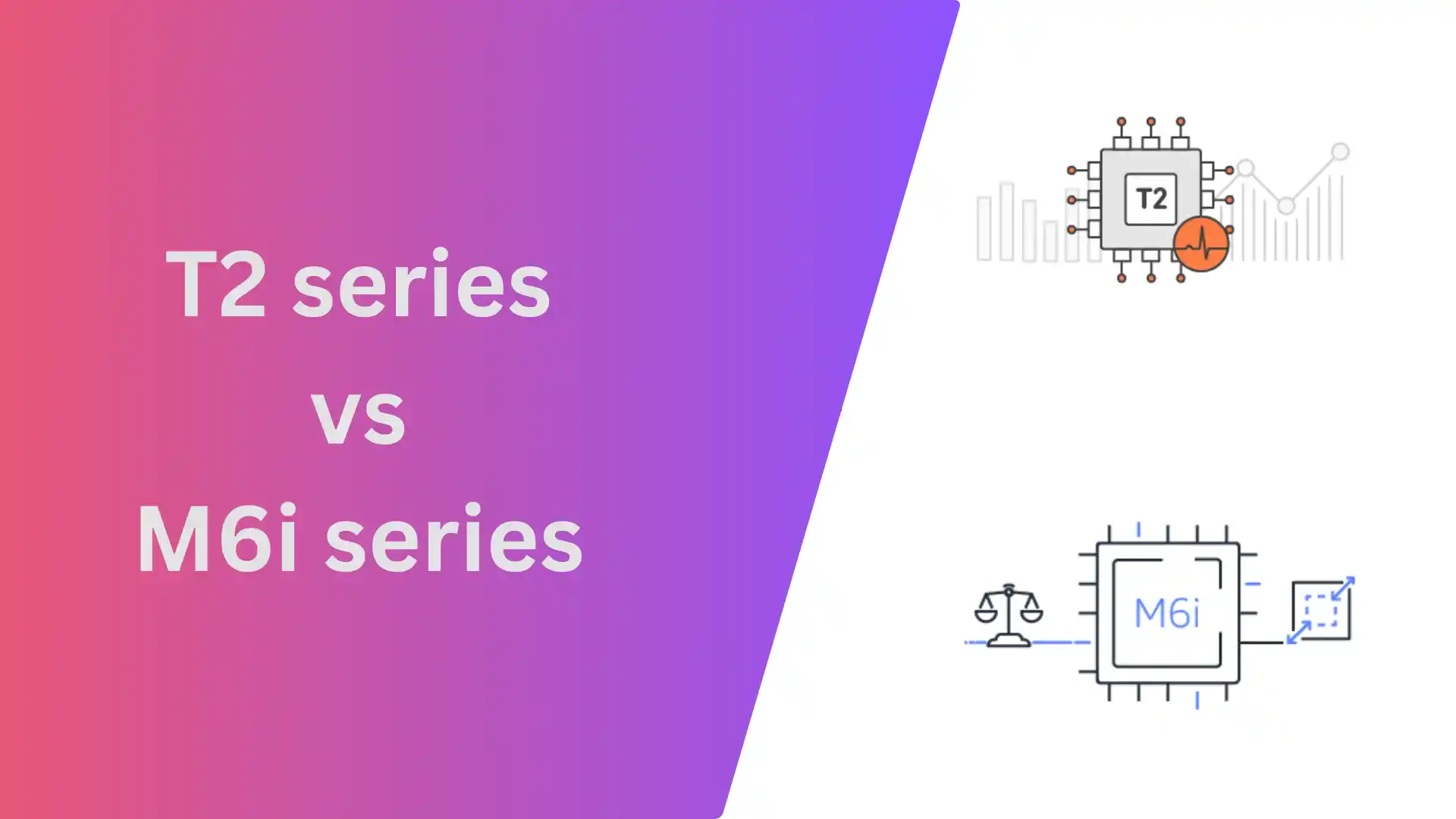Table of Contents
AWS EC2 Instance Introduction
AWS EC2 offers a wide range of instance types designed for different workloads. Among these, the T2 series and M6i series stand out for their versatility in handling general-purpose tasks. They differ significantly in how they deliver performance and their intended use cases.
In this article, we’ll explore the features of T2 and M6i instances and identify three key differences between them.
T2 Instances: Cost-Efficient, Burstable Performance
The T2 series is designed for workloads that don’t require constant high performance but may need to handle occasional spikes in CPU demand. These instances operate using a CPU credit system. When idle or under low load, T2 instances accumulate credits, which can be used to burst above the baseline performance during periods of higher CPU usage.
Key Features of T2 Instances:
- Burstable CPU Performance: T2 instances allow temporary boosts in performance when workloads demand it.
- CPU Credit Model: Instances earn credits during low usage and spend them when bursting.
- Cost-Efficient: Ideal for light workloads with fluctuating demands.
- Use Cases: Websites, lightweight databases, development, and test environments where the performance needs vary over time.
M6i Series Instances: Consistent Performance for General-Purpose Workloads

The M6i series belongs to the sixth generation of AWS’s general-purpose instances and is powered by Intel Xeon Scalable processors. These instances are built for steady and predictable performance, making them ideal for applications that require continuous, reliable computing and memory resources.
Key Features of M Series Instances:
- Consistent Performance: Delivers stable CPU power with no reliance on burst credits, making them suitable for sustained workloads.
- Intel Xeon Scalable Processors: Offers improved performance and memory bandwidth, supporting a broad range of demanding applications.
- Enhanced Networking: M6i instances provide high networking throughput, ideal for data-intensive tasks.
- Use Cases: Web servers, large databases, enterprise applications, and big data workloads that need consistent performance.
3 Key Differences Between T2 and M6i Instances
1. Burstable vs. Consistent Performance
The most significant difference between the two instance families is how they handle CPU performance:
- T2 Instances: Provide burstable performance, meaning they run at a baseline level and can temporarily boost performance using CPU credits. This is ideal for workloads that have periods of inactivity followed by short bursts of high activity.
- M6i Instances: Deliver consistent, sustained performance. These instances are designed for workloads that need reliable performance over long periods, without the variability associated with the T2’s burst model.
2. CPU Credit System vs. Fixed CPU Power
- T2 Instances: Operate using a CPU credit system. T2 instances earn credits when idle and use those credits to burst when needed. However, once the credits are depleted, performance drops back to the baseline.
- M6i Instances: Offer fixed CPU power without relying on credits. They consistently deliver the same level of performance, which is crucial for workloads that require continuous processing and can’t afford to slow down.
3. Pricing and Use Case Differences
- T2 Instances: Known for being cost-effective. Their pricing model is ideal for workloads that don’t require sustained performance and can benefit from occasional bursts. This makes T2 instances more affordable for light workloads like small websites and development environments.
- M6i Instances: While generally more expensive than T2, M6i instances are optimized for broader, high-demand workloads. They are better suited for applications that require a constant level of high performance, such as large databases, enterprise applications, and high-performance computing.
When to Use T2 Instances
- Workloads with intermittent or bursty CPU usage.
- Applications that can benefit from temporary bursts in performance but don’t require continuous high-performance computing.
- Cost-sensitive environments, such as development and test setups, lightweight web servers, and microservices.
When to Use M6i Instances
- Applications that require steady performance for extended periods, such as web applications, backend servers, and enterprise databases.
- Workloads that benefit from Intel Xeon Scalable processors, improved memory bandwidth, and higher network performance.
- Scenarios where predictable performance is essential, such as big data processing, large-scale e-commerce platforms, or corporate applications.
Conclusion
Both T2 and M6i instances serve different purposes within AWS’s EC2 portfolio. The T2 series excels in situations where cost-efficiency is key and the application can handle burstable CPU performance. On the other hand, the M6i series is ideal for more demanding applications that require consistent, reliable computing resources.
When choosing between the two, consider the workload characteristics, performance needs, and budget to determine which instance family best fits your application’s requirements.





